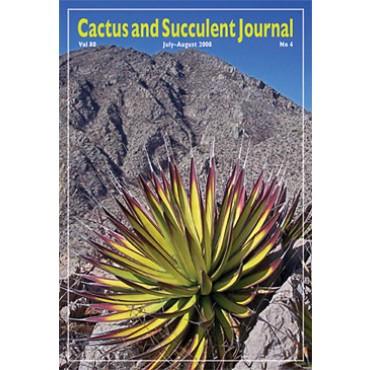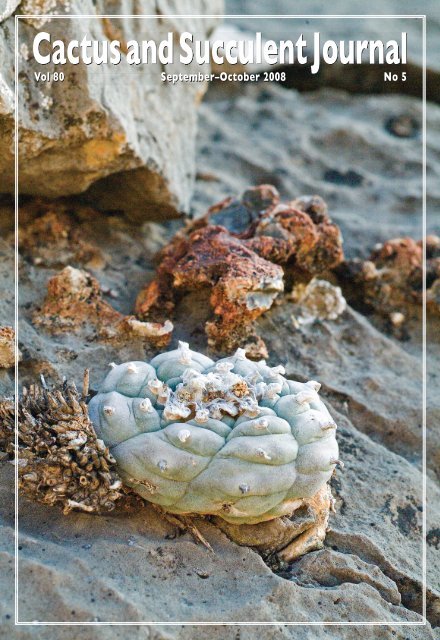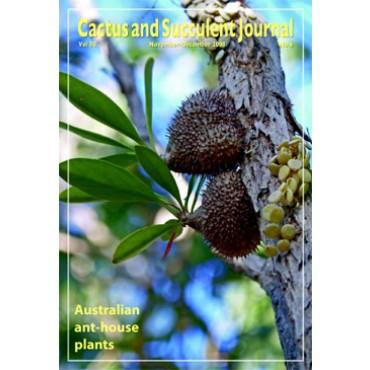Peer-reviewed articles
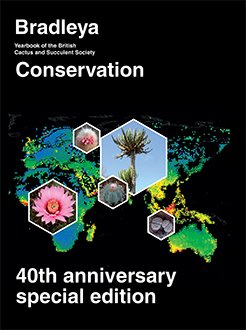
Abstract
In this article we review the literature, with a focus on cacti, about the role of cultivation in conservation. We examine in detail the case study of Lophophora williamsii, the peyote cactus, and present arguments that cultivation is not only a necessary conservation strategy for this particular species but is likely the only viable alternative for long-term survival of this cactus in the wild. Concerns about cultivation, as well as recommendations and conservation implications are also discussed.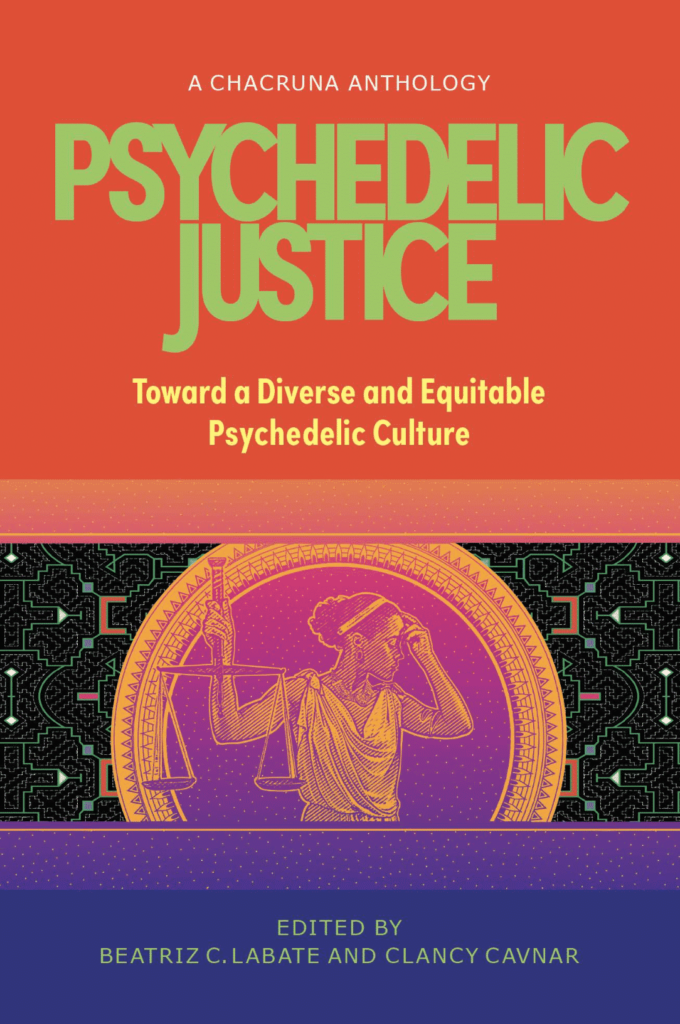
Book chapter
A Word in Edgewise About the Sustainability of Peyote.
Anna Ermakova and Martin Terry.
Psychedelic Justice: Toward a Diverse and Equitable Psychedelic Culture (2021): Section 6, pp. 181-186.
Editors: Beatriz Caiuby Labate, Clancy Cavnar
Publisher: Synergetic Press, September 2021
ISBN: 0907791859, 9780907791850
PDF ISBNOur chapter
Our chapter is available on Chacruna website.
Book description
Essays on the history of psychedelics, the present renaissance, and visions for an inclusive and equitable future.
As psychedelics and psychedelic-assisted therapies explode into the popular consciousness, what does it mean to cultivate and embody a psychedelic renaissance that learns from the past and prepares for the future?
From cultural appropriation and sustainability to diversity, inclusion and venture capitalism, Psychedelic Justice: Toward a Diverse and Equitable Psychedelic Culture examines the history of psychedelics, celebrates its present moment and contemplates how advocates and policymakers can shape the future integration of psychedelics into general society.
An anthology of essays written for the Chacruna Institute and edited by its co-founders Bia Labate, Ph.d, and Clancy Cavnar, Psy.D, Psychedelic Justice highlights the need for an inclusionary, societal-level approach to the psychedelic renaissance. In addition to psychedelics and drug policy, works in this book examine psychedelics in the contexts of capitalism, Indigenous traditions, reciprocity, sustainability, mental health, diversity, sex, power, and more.
“Labate and Cavnar have done it again: an excellent, timely anthology that addresses crucial issues in the psychedelic community of social equity, the globalization of psychedelic substances and culture, and our shared responsibility to prevent the extinction of these plants and animals.” ─Julie Holland, MD author, Good Chemistry: The Science of Connection, from Soul to Psychedelics. (Harper Wave, 2020)
“Psychedelic Justice is an inspiring and important collection of essays that ask the hard questions the psychedelic community needs to grapple with to move forward with integrity.” ─Michelle Janikian, author of Your Psilocybin Mushroom Companion
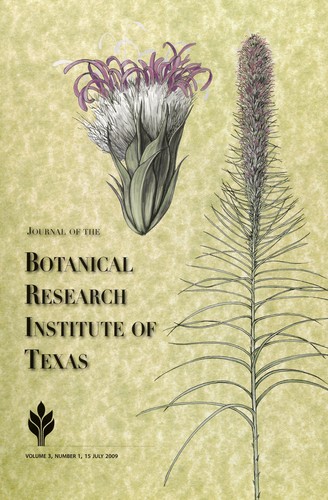
Abstract
Lophophora williamsii (Cactaceae) is thought to be threatened by habitat loss and overharvesting. However, basic demographic and habitat information to evaluate its conservation status has been lacking. We surveyed six wild populations of this species, three in South Texas and three in West Texas, to begin to address this gap. We found high levels of heterogeneity in plant presence and density at multiple spatial scales. While plant densities were not consistently different between South and West Texas, plants were significantly larger in West Texas. The two regions differ strongly in precipitation, temperature, elevation, and topography, all of which are correlated at the regional scale. Therefore, it was not possible to identify which of these variables, or other factors such as competition and human harvesting, may be responsible for the regional differences in plant size. However, our results provide initial information for determining the conservation status of this species.




Abstract
The purpose of this study was to investigate samples of commercial over-the-counter products purported to contain extracts from peyote cactus (Lophophora williamsii), a vulnerable species. Samples were extracted with organic solvent and then washed to remove impurities. The extracts of these products were subjected to an analysis by real-time mass spectrometry (DART-MS) to determine the presence or absence of the alkaloid mescaline (3,4,5-trimethoxyphenethylamine). High-performance liquid chromatography (HPLC) was used to determine mescaline concentrations in the samples and to provide quantitative evidence of the concentration—if any—of mescaline in the products. If a detectable level of mescaline—a stable and abundant alkaloid of L. williamsii—was found in a given extract, then it was inferred that L. williamsii was present in the corresponding topical product. The results of this investigation show that most consumers who purchase the products in question are being defrauded if they believe they are buying L. williamsii-based medicines. The lack of mescaline—implying the lack of peyote—in these products suggests that wild populations of the vulnerable cactus L. williamsii, though currently being decimated on a massive scale in Mexico and the U.S. for other purposes, are rarely harvested for use in topical analgesic products. This conclusion is based on the finding that less than 5% of the ostensible L. williamsii-containing topical analgesic products that were analyzed in this study actually contained mescaline.



Abstract
Lophophora williamsii, peyote, is a small cactus growing to approximately 10 cm in diameter with a flat to dome-shaped spineless crown with fissures or ribs that develop following the Fibonacci series and whose numbers indicate relative degree of maturing. In this study crown tissue of 30 wild-collected specimens was analyzed to determine whether there was a correlation between the concentration of the primary alkaloid mescaline in crown tissue with the average diameter of the crown. We also compared mescaline concentration in three groups of ten individuals: 5 ribs (juvenile stage), 8 ribs (intermediate), and 13 ribs (elder/mature stage), since these Fibonacci numbers are the most stable and long-lasting on L. williamsii. This was designed to test the hypothesis that there is a positive correlation between mescaline concentration and both diameter and rib number. Nine greenhouse-grown specimens were likewise analyzed to serve as a control group for the study. All 39 tissue samples were subjected to an alkaloid extraction procedure followed by an acid-base washing procedure. Mescaline was identified using liquid-chromatography and mass spectroscopy and then quantified using reverse-phase high-pressure liquid chromatography. The Pearson’s Chi-squared test showed no statistical correlation between increasing mescaline concentration and increasing rib numbers for field-collected samples and greenhouse?raised control samples. Field-collected samples: P-value of 0.392; greenhouse control samples: P-value of 0.313. Similarly, field and greenhouse samples showed no statistical correlation between mescaline concentration and average diameter of the crown. Field-collected samples: P-value of 0.251; greenhouse control samples: P-value of 0.229. This study contributes to the understanding of this vulnerable species and to approaches to its overall conservation and the preservation of Native American culture.
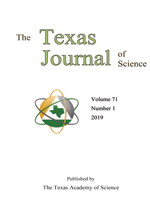

Full text
All living things, including humans, exist in complex interdependent relationships known as ecosystems. Destruction and degradation of natural ecosystems are the primary causes of declines in biodiversity, the key indicator of ecosystem health (Haddad et al. 2015). Healthy ecosystems provide many crucial services: they clean the water, purify the air, regulate the climate, maintain soils, recycle nutrients, and provide us with raw materials and resources for medicines, fuel, fiber, and food. The controversy regarding the construction of a physical barrier along the U.S.-Mexico border has highlighted important scientific factors related to biodiversity that should be considered in order to inform and affect the construction — or abstention from construction — of a barrier along the U.S.-Mexico border intended to deter human immigration. Texas has more at stake in this debate than any other state in the U.S. due, in part, to the physical-geographic fact that Texas comprises over two-thirds (2018 km/1254 mi) of the total U.S.-Mexico border length (3145 km/1954 mi) and encompasses the largest remaining unspoiled area of the borderlands, the Trans-Pecos portion of the Chihuahuan Desert.
Scientific concern about the management and ecology of U.S.-Mexico borderlands is increasing. Prior to 2007, concern over border security focused on illegal immigration and drug smuggling with little attention given to conservation and wildlife (Cohn 2007). Over the past decade, scientists have called for more research and consideration regarding environmental effects upon borderland biodiversity (e.g., Liu et al. 2019). Three ways in which border infrastructure and security operations threaten biodiversity are (1) construction activity bypassing environmental laws, (2) degradation, fragmentation, and elimination of habitat, and (3) devaluation of bi-governmental conservation investments and scientific research (Peters et al. 2018). Two of the six ecoregions bisected by the U.S.-Mexico border are in Texas: the Trans-Pecos and the Tamaulipan thornscrub. Fowler et al. (2018) recently expressed environmental concern over threats to Texas biodiversity through a scientific literature review of 14 publications focusing on examples of habitat fragmentation and ecosystem damage in the Tamaulipan thornscrub. The Trans-Pecos represents some of the last remaining unspoiled ecosystems in the U.S.-Mexico borderlands. From a scientific point of view, key environmental issues associated with the construction of a U.S.-Mexico border barrier that should be considered include physical area requirements, land-use change effects on hydrology and habitat fragmentation, and altered ecology of soils, vegetation, and wildlife. Additionally, all of these environmental issues will negatively influence future generations of people inhabiting the area.
The land area required to construct a U.S.-Mexico border barrier is significant. A cleared swath roughly 12–20 m (39–66 ft) wide, equivalent to four or five highway lanes, would be physically occupied and irreversibly altered. However, in addition to land clearing for the physical barrier itself, an estimated additional 12–20 ha, per km of barrier, will be required for construction staging and access roads (USDHS et al. 2008). Considering that the Texas-Mexico border stretches 2018 km (1254 mi), the potential land-use requirement for barrier infrastructure amounts to 443 km2 (171 mi2). Ecological edge effects further magnify the total amount of natural habitat that could ultimately be affected. The clearing of linear tracts (i.e., road corridors) penetrating into previously undisturbed areas decreases the interior habitat size and renders local plants and animals more exposed and vulnerable. This latter phenomenon gives rise to habitat fragmentation, complete separation of formerly connected areas, which in turn leaves isolated populations susceptible to inbreeding. Eventually species extirpation (i.e., removal, destruction, extermination) may result, and in worst case scenarios, species extinction may occur (Haddad et al. 2015).
Land-use change, caused by physical barriers (i.e., fences) and supporting road networks, presents a significant concern as it negatively affects habitat and associated regional ecology through reduced biodiversity (Forman & Alexander 1998; Trombulak & Frissell 2000). Roads bisect the landscape, fragmenting habitat and degrading ecosystems. Seven general effects of roads were identified by Trombulak & Frissell (2000): mortalities caused by both road construction and collisions with vehicles, alterations of both the physical and chemical environments, changes in animal behavior, increased spread of exotic species, and increased human land use. Epps et al. (2005) demonstrated reduced connectivity and genetic diversity in desert bighorn sheep populations due to roads and fences in the Mojave and Sonoran Desert regions of California. Roads and barriers reroute natural drainage patterns that further alter the landscape through sediment erosion, entrainment, and deposition processes (Montgomery 1994). Land-use changes driven by human activities have been shown to reduce microbial and faunal abundance and the overall diversity of soil organisms (Rocca et al. 2019). Reduced biodiversity in soils may impair numerous ecosystem functions, such as nutrient acquisition by plants and the cycling of resources between above- and below-ground communities (Wagg et al. 2014). High levels of suspended sediment in streams and springs resulting from expanded roadways and illegal traffic in borderland areas have been shown to negatively affect fish populations in southern Arizona (Barkalow & Bonar 2015). Limiting and strategically locating road expansion may be the most cost-effective and straightforward way to achieve biodiversity and sustainability goals (Laurance et al. 2014; Ibisch et al. 2016).
Fences are used to protect and manage resources, delineate land ownership, and define political boundaries but at the cost of accelerated ecosystem fragmentation. Even fences designed for positive benefits (i.e., conservation fencing) may have negative consequences for others (i.e., limit movement) (Jakes et al. 2018). For example, along the U.S.-Mexico border human migration and drug smuggling causes habitat degradation and pollution as people traveling through remote areas create trails, produce human waste, and discard used supplies (e.g., USGAO 2004; ADEQ 2019). Fences may reduce human traffic and their associated impacts on the environment (Schieffelin 2012). However, the wall may worsen rather than improve vehicular traffic, even after its initial construction. Government vehicles travel over roads and trails in these areas, both for patrolling and to install and maintain fences, walls, and surveillance equipment. Smugglers may be displaced into more remote and relatively pristine areas. Whether a fence is a useful management tool or a problem for ecosystem conservation depends upon the point of view. Solutions based on ecological concepts and empirical data must find balance between social needs and natural ecosystem conservation (Jakes et al. 2018).
Since accelerated construction began in the 1990's, border fence infrastructure has been shown to amplify runoff and exacerbate flooding (Norman et al. 2010; Sorrensen 2012). Fences and grated channels, when clogged with runoff debris, act as temporary dams which back up and channelize flood waters. At least half a dozen incidents have occurred at fenced portions of the U.S.-Mexico border since 2006, causing millions of dollars in damage and loss of human life (Sadasivam 2018). Additional infrastructure is likely to have similar outcomes through hydrological and hydraulic changes unless environmentally conscious strategies are applied (Granados-Olivas et al. 2016; Walsh et al. 2016). Flooding effects are not limited to human-related impacts. Flood-altered landscapes in South Texas have been shown to directly contribute to the decline of wild turkey (Perotto-Baldivieso et al. 2011) and case studies suggest numerous species may be significantly affected by border security fences, supporting infrastructure, and artificial lighting (Flesch et al. 2010).
Much of South Texas is occupied by a collection of plants and animals that collectively comprise an ecological zone known as the Tamaulipan thornscrub. As the name implies, this ecoregion stretches from far South Texas east across the Rio Grande/Río Bravo and south through much of the Mexican state of Tamaulipas. It is home to numerous endangered animal and plant species including the ocelot, several migratory birds, the star cactus, the Zapata bladderpod, and Walker's manihot. Ninety-five percent of the native Tamaulipan thornscrub has already disappeared over the last century due to economic development that follows the bulldozing or root-plowing of native vegetation (Schlyer 2018). Construction of a U.S.-Mexico physical barrier would constitute one more destructive action reducing the remaining Tamaulipan thornscrub habitat.
A similarly diverse and relatively pristine ecosystem in Texas is the Trans-Pecos, the portion of the state lying west of the Pecos River. This complex area contains a variety of vegetation and animal communities spread across diverse habitats from desert flats to mountain slopes. Although the amount of economic development in West Texas is miniscule compared to South Texas, the potential for irreversible damage to the ecoregion as a result of a physical border barrier and supporting road network is just as significant. One example is the possibility that the proposed barrier would run through Big Bend National Park between the Chisos Mountains and the Rio Grande. The result could negatively affect the park's population of black bears by cutting them off from larger populations in Mexico. Restricted gene flow would lead to inbreeding and adverse genetic effects (Lasky et al. 2011). This phenomenon was recently described in populations of the Western Diamondback Rattlesnake (Crotalus atrox) divided by an interstate highway (Herrmann et al. 2017). Roadway-induced loss of genetic diversity in this species of rattlesnake found across the desert southwest suggests that more sensitive and threatened or endangered species may also be at risk.
There is concern about barrier construction projects being exempt from environmental review requirements (US Public Law 109-13, Section 102c). This is particularly troubling because much of the land along the border in South and West Texas is federally owned. Activities have already begun in preparation for the partial destruction of the Mission Texas Butterfly Sanctuary, a key stopover point the Monarch butterfly uses during its ~3200 km (~2000 mi) annual migration. There are several other parks/sanctuaries that could be affected including Bentsen-Rio Grande Valley State Park, Resaca de la Palma State Park, and Santa Ana National Wildlife Refuge. These areas are integral to our state and national heritage and as such, should be preserved from a societal point of view as well as for ecological reasons. The Texas Academy of Science echoes those suggestions proposed by Fowler et al. (2018) for any proposed border construction projects: (a) conducting an appropriate environmental review for each proposed barrier section, even if it is not required, (b) limiting the extent of physical barriers and associated roads, (c) designing barriers in such a way as to permit animal passage, and (d) substituting less biologically harmful devices, such as electronic sensors, for physical barriers.
There are many well-founded, science-based concerns about the negative ecological impacts of physical barriers and associated disturbances on the U.S.-Mexico border. We should not lose sight of the fact that the impacts of the proposed physical barrier on the landscape and its ecology are irreversible. Once inflicted, they cannot be undone – nature will either find a way to adapt – almost certainly in reduced numbers and quality – or perish. The final result will affect humanity on both sides of the border.
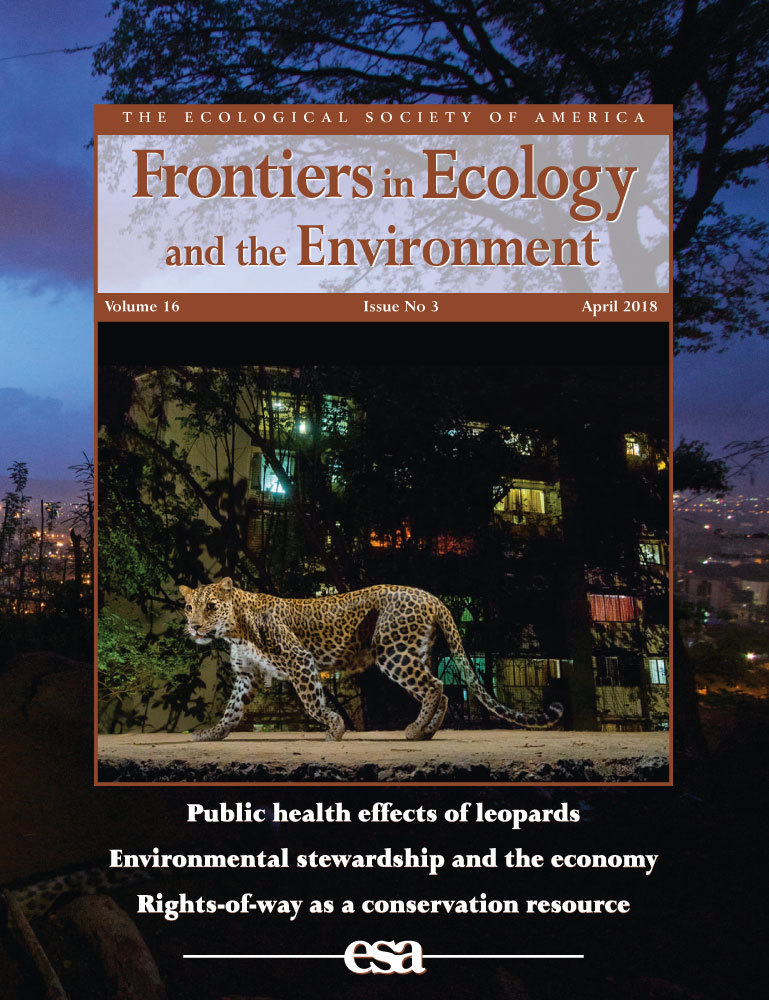

Abstract
We evaluated the pharmacological consequences of tissues other than crown being included with harvested peyote. Mean mescaline concentrations were determined for crown, non-chlorophyllous stem, and root, using mature individuals from the same population in South Texas. Samples of each tissue—crown, non-chlorophyllous stem, and root—were taken from each of 13 individual plants. Samples were dried, triturated, defatted, and extracted with methylene chloride, using an acid-base aqueous wash to recover the alkaloids. The concentration of mescaline in each sample was determined by HPLC. The average mescaline concentration in non-chlorophyllous stem was an order of magnitude lower than that in crown, whereas the mescaline concentration in root was two orders of magnitude lower than that in crown. These results show that non-chlorophyllous stem is a poor source of mescaline, and root is an extremely poor source. These results have important implications for conservation, suggesting that non-traditional harvesting of peyote for religious or medicinal use involving the cutting of non-chlorophyllous tissue are contributing to the death of plants and the subsequent failure to regenerate new crowns. Therefore, this practice should be reevaluated by peyote harvesters and users.


Abstract
Access to the peyote cactus, a religious sacrament of the Native American Church (NAC), has been regulated by the federal government and the state of Texas since the 1960s. Over the last forty years, the number of licensed distributors has declined, a trend accompanied by rising prices and a diminishing market supply of the psychoactive cactus. Distributors are recognized as the primary NAC peyote source; consequently, their disappearance would be devastating for the 250,000-plus adherents of this distinctive indigenous tradition. Based on interviews with current and former peyote distributors, peyote pickers, landowners, and NAC members, a map of the various commodity chains that make up the peyote supply network is constructed. This research applies Access Mapping and Access Analysis of the supply network to identify the primary factors driving the decline of the regulated peyote trade. Focusing on the distributors' and NAC members' rights-based, structural, and relational access mechanisms, avenues for increasing access are identified, including amendment of distributor licensing fees.








Abstract
The peyote cactus, Lophophora williamsii, is presently classified as a Schedule 1 Controlled Substance in the USA, with an exemption for use as a sacrament in bona fide religious ceremonies of the Native American Church (NAC). Any botanist or other researcher seeking to work with peyote or any of its alkaloids, must comply with applicable (nontrivial) regulatory requirements. This paper presents an examination of the prohibition efforts that paved the way for current peyote regulation, accompanied by documentation of the religion-based political origins of such efforts, which involved the "acculturation" of Native Americans (i.e., the destruction of American Indian cultures). We also look at the historical emergence of a nationally organized and coordinated effort by missionaries and other prohibitionists to sell a federal anti-peyote law to Congress, which manifested itself repeatedly over a period of more than fifty years, before finally realizing success in the Controlled Substances Act of 1970. In view of ongoing changes in the legal/regulatory status of Cannabis sp. (another Schedule 1 plant that was targeted for illegality during the prohibitionists' rise to political predominance), we compare and contrast the two plants with speculation on peyote's future.
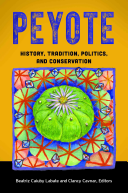

Abstract for our chapter
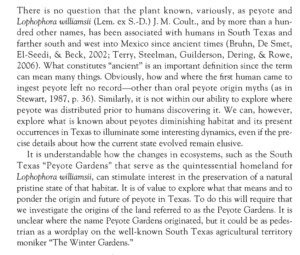

A number of errors were introduced into our chapter after both the authors and the editors had performed final proofing. It is otherwise a beautiful and interesting book.
[PDF of the problems that we have noticed in our hardcopy.]
Book description
This book explains the role that peyote—a hallucinogenic cactus—plays in the religious and spiritual fulfillment of certain peoples in the United States and Mexico, and examines pressing issues concerning the regulation and conservation of peyote as well as issues of indigenous and religious rights.
Why is mescaline—an internationally controlled substance derived from peyote—given exemptions for religious use by indigenous groups in Mexico, and by the pan-indigenous Native American Church in the United States and Canada? What are the intersections of peyote use, constitutional law, and religious freedom? And why are natural populations of peyote in decline—so much so that in Mexico, peyote is considered a species needing "special protection"? This fascinating book addresses these questions and many more. It also examines the delicate relationship between "the needs of the plant" as a species and "the needs of man" to consume the species for spiritual purposes.
The authors of this work integrate the history of peyote regulation in the United States and the special "trust responsibility" relationship between the American Indians and the government into their broad examination of peyote, a hallucinogenic cactus containing mescaline that grows naturally in Mexico and southern Texas. The book's chapters document how when it comes to peyote, multiple stakeholders' interests are in conflict—as is often the case with issues that involve ethnic identity, religion, constitutional interpretation, and conservation. The expansion of peyote traditions also serves as a foundation for examining issues of international human rights law and protections for religious freedom within the global milieu of cultural transnationalism.
Features
- Explains the complete history of the peyote plant in the United States, presenting views from religions including Native American and Christian churches, the creation and evolution of U.S. law regarding peyote, state and federal legal protections since 1990, reasons for the plant's apparent demise, and arguments for its stronger protection
- Identifies current peyote protective laws in Mexico and Canada
- Documents how many U.S. residents, including Native Americans, commonly use peyote as a spirituality enhancer or illegal recreational drug within the United States, or do so as tourists when visiting Mexico
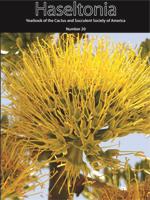

Abstract
We evaluated the pharmacological consequences of tissues other than crown being included with harvested peyote. Mean mescaline concentrations were determined for crown, non-chlorophyllous stem, and root, using mature individuals from the same population in South Texas. Samples of each tissue—crown, non-chlorophyllous stem, and root—were taken from each of 13 individual plants. Samples were dried, triturated, defatted, and extracted with methylene chloride, using an acid-base aqueous wash to recover the alkaloids. The concentration of mescaline in each sample was determined by HPLC. The average mescaline concentration in non-chlorophyllous stem was an order of magnitude lower than that in crown, whereas the mescaline concentration in root was two orders of magnitude lower than that in crown. These results show that non-chlorophyllous stem is a poor source of mescaline, and root is an extremely poor source. These results have important implications for conservation, suggesting that non-traditional harvesting of peyote for religious or medicinal use involving the cutting of non-chlorophyllous tissue are contributing to the death of plants and the subsequent failure to regenerate new crowns. Therefore, this practice should be reevaluated by peyote harvesters and users.
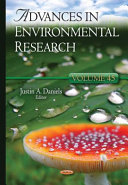

Book chapter
When Cultivation of a Religious Sacrament Equals Manufacturing a Controlled Substance: Effects of the Absence of Adequate Regulatory Structure on the Conservation of Peyote.
Martin Terry, Keeper Trout & Bennie Williams. 2015.
Advances in Environmental Research, 2015, Volume 45, Chapter 3. (Nova Science Publishers) ISBN: 978-1-63483-299-1.
PDF ISBN
We have been unable to obtain a copy of this but it will be added as soon as it becomes possible.








JOURNAL ARTICLE
Limitations to natural production of Lophophora williamsii (Cactaceae) III. Effects of repeated harvesting at two-year intervals for six years in a South Texas (USA) population.
Martin Terry, Keeper Trout, Bennie Williams, Teodoso Herrera and Norma Fowler
Journal of the Botanical Research Institute of Texas,
Vol. 8, No. 2 (2014), pp. 541-550
PDF DOIAbstract
Here we report the 6-year results of a long-term study of the effects of harvesting on a wild population of the cactus Lophophora williamsii (peyote). Harvesting was performed using the best known technique: removing only the crown from the top of the plant. The two-year interval between harvests was chosen because it was similar to that observed by persons who harvest peyote for legally protected religious use by members of the Native American Church. Plants in the study were divided into three treatment groups: (1) control plants that were never harvested, (2) plants that were harvested only once, at the beginning of the study, and (3) plants that were harvested at the beginning of the study and every two years thereafter. Over the last two years of the study (2012‒2014), the survival rate was significantly lower (77%) in the plants harvested every two years than in the once-harvested plants (100%) and the unharvested control plants (98%). At the end of the 6th year of the study, average volume of living crown tissue per plant was significantly and substantially lower in the plants harvested every two years than in the once-harvested plants and the unharvested controls. The average volume of once-harvested plants was 27% lower than that of the controls, although this latter difference was not statistically significant. The modal number of crowns per plant varied with treatment and over time; in the plants harvested every two years it underwent a progression from 1 to 2 to 3 to 1 in response to successive harvests. The results of this study indicate that a six-year recovery period, following the harvesting of peyote in natural habitats, is probably not long enough to ensure long-term sustainability. key words: cactus conservation, peyote harvest, cactus overharvesting, Native American Church, peyote conservation status.








JOURNAL ARTICLE
A preliminary report of mescaline concentrations in small regrowth crowns vs. mature crowns of Lophophora williamsii (Cactaceae): Cultural, economic, and conservation implications.
Abul Kalam, Keeper Trout, Molly T. Klein, Paul Daley, Diana Hulsey and Martin Terry
Abstract
A phytochemical analytical study was conducted to address the question of whether the mescaline concentration in Lophophora williamsii (peyote) is dependent on the maturity and/or size of the plant. Samples of crown tissue (4 g each) biopsied from mature peyote cacti and whole small regrowth crowns (2-4 g each) were collected from the same population in the Tamaulipan Thornscrub ecoregion of South Texas. For each of the two groups (mature and small regrowth), the individual tissue samples were pooled, desiccated, and ground to powder. The alkaloids were extracted with methanol at 25°C, followed by evaporation of the methanol to dryness, then acid-base cleanup with water and dichloromethane. The mescaline concentration in each of the extracts was then determined by HPLC. Quantitative analyses provided evidence that the small crowns that develop in response to harvesting contain a lower mescaline concentration—about half as much—compared to that of crowns of mature unharvested plants in the same population. The deficiency in the mescaline concentration of these regrowth buttons (new crowns) exacerbates the problem posed by the small size of the buttons; that is, it further increases the number of buttons that must be consumed to obtain an efficacious dose for ceremonial use by members of the Native American Church (NAC). That means that either the NAC members must consume less than the traditional amount of peyote, or there will be increased demand for peyote. Any increase in demand, reflected in the price, will engender more intensive harvesting, which will inevitably have adverse effects on both the supply of sacrament for the NAC and the conservation status of L. williamsii wherever the harvesters have access to peyote populations.



Abstract
The progress toward and impediments to legally protected cultivation of Lophophora williamsii, commonly known as peyote, are elucidated. Recent increases in the ceremonial and medicinal consumption of peyote are inferred from published data and personal observations of the authors. The conservation-based rationale for peyote cultivation is that the predictable shift in the primary mode of production from the current unsustainable harvesting of wild peyote in habitat to regulated cultivation of peyote, either in situ or under glass, would provide alternative supplies of peyote for current and future
use by the Native American Church. Such a change in the principal peyote production system from wild-harvesting to cultivation would logically reduce the harvesting pressure on the peyote populations that survive the intense overharvesting inherent in the present system. We summarize current and evolving aspects of the regulatory environment and emerging perceptions regarding the need for U.S. federal regulations that would provide legal certainty for individuals involved in the adoption of cultivation of culturally acceptable peyote on an economically viable commercial scale.
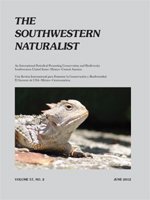

Abstract
We used data on alleles of seven polymorphic microsatellite loci in 142 individuals of the star cactus Astrophytum asterias from five subpopulations to estimate genetic parameters. Four of the subpopulations had high levels of heterozygosity and allelic diversity compatible with efficient outcrossing, and low FST-values that suggested high rates of gametic gene flow effected by winged-insect pollinators. The fifth subpopulation that was small and occupied the smallest area had low levels of heterozygosity and allelic diversity, which can be caused by small populations, inbreeding, geographic isolation, and founder effect. Our research indicated that all subpopulations, except one, were genetically suitable sources of propagules for reintroduction or for augmentation of other populations.








Abstract
In 2008 we began a long-term study of the effects of harvesting on a wild population of the cactus Lophophora williamsii (peyote), including harvesting treatments similar to those used to harvest it for legally protected religious use by members of the Native American Church. Here we assess the effects of harvesting in three different treatments: (1) plants that were harvested once, (2) plants that were harvested every two years (typical of commercial harvesting rates), and (3) control plants that were never harvested. After four years, the survival rate was significantly greater in the unharvested control plants (94%) than in the harvested plants (73%). Average harvested mass of fresh tissue per plant decreased significantly (by 44%) between the first and second harvests, and then further decreased significantly (by 32%) between the second and third harvests. The average number of crowns per plant, which increased after the first harvest, decreased after the second harvest. Estimated total volume of the above-ground crown(s) of each plant, which was closely related to harvested plant mass, was used to compare growth rates between treatments. The average growth rate of the multiple-harvest plants was significantly lower than the average growth rates of plants in the other two treatments. Growth rates in the control and single-harvest treatments did not differ significantly in 2012, but because the single-harvest plants were so much smaller than the control plants in 2010, they remained smaller than the control plants in 2012. The annual number of crowns harvested and sold commercially as "buttons" by licensed peyote distributors continued its slow decrease in 2011, while the price per unit continued to rise. These trends and the results of this study all indicate that present rates of peyote harvest are unsustainable.








JOURNAL ARTICLE
Clinal geographic variation in mescaline concentration among Texas populations of Lophophora williamsii (Cactaceae).
Diana Hulsey, M. Abul Kalam, Paul Daley, Norma Fowler and Martin Terry
Journal of the Botanical Research Institute of Texas,
Vol. 5, No. 2 (7 DECEMBER 2011), pp. 677-683 (7 pages)
PDF DOI
Abstract
A phytochemical analytical study was conducted to address the question of whether Lophophora williamsii (peyote) plants from Chihuahuan Desert populations in the Trans-Pecos region of West Texas exhibited higher tissue concentrations of mescaline than plants from Tamaulipan Thornscrub populations of South Texas. This question is of cultural significance to the Native American peyote religion, which involves the ingestion of peyote as a psychopharmacologically active sacrament. Tissue samples were field-collected from 10 individuals in each of four L. williamsii populations, two of which were located in the Chihuahuan Desert, and two of which were located in the Tamaulipan Thornscrub ecoregion. For each of the four populations, the tissue samples from 10 individual plants were pooled, the alkaloids were extracted, and the average mescaline concentration of the population was determined by HPLC. There was limited geographic variation in mescaline concentration; the highest concentration (3.52% of dry tissue) was only 27% greater than the lowest (2.77%), and the difference between the Chihuahuan Desert populations and the Tamaulipan Thornscrub populations was not significant. However, mescaline concentrations increased significantly along a gradient from southeast to northwest, i.e., from the southeasternmost Tamaulipan Thornscrub population to the northwesternmost Chihuahuan Desert population.








Abstract
Lophophora williamsii (peyote) is a cactus whose crowns are commercially harvested for religious use as an ingested psychoactive sacrament by members of the Native American Church. Over the past quarter century peyote has become progressively less available, due in part to improper harvesting techniques and excessive harvesting. Since anatomical aspects of the regrowth of peyote and best harvesting practices were explicated in a previous study (Terry & Mauseth 2006), the principal focus in the present study was to determine the effects of harvesting where only best practices were employed. We assessed the effects of (1) harvesting per se (a single harvesting event evaluated after two years), (2) repeated harvesting (two harvesting events two years apart), and (3) not harvesting at all. After two years, the once-harvested group had a 90% survival rate and the unharvested control group had a 98% survival rate, a difference that was not statistically significant. The above-ground volume of the unharvested plants was significantly larger than that of the regrown harvested plants. While the regrown harvested plants had on average more crowns, their crowns were significantly smaller, in comparison to those of the unharvested plants. After two years, the surviving plants in the harvested group were divided into two subgroups, one of which was harvested for a second time. The other subgroup consisted of plants that had been harvested only once (at the start of the study) and were not reharvested. The weights of the crowns obtained in the second harvest were significantly lower than the weights of the crowns obtained in the first harvest from the same plants two years earlier. The net effect of a single harvesting was a reduction of plant above-ground volume by almost 80% after two years of regrowth. These data reflect what is occurring on a massive scale in habitat where peyote is commercially harvested. The annual numbers of crowns being harvested have not yet decreased drastically, due to the increased number of crowns produced as regrowth in response to harvesting. But the average size of the crowns in the regulated peyote market has decreased markedly due to too-early harvesting of immature regrowth crowns. These results—with emphasis on the conspicuous reduction in mean size of individuals—are typical of overharvested populations of wild-collected species, such as ginseng. The conclusion for conservation management is that reducing the frequency of harvesting of wild peyote would allow regrowth crowns to mature in size—thus reducing the number of crowns per dose required for sacramental consumption. It would also allow regrowth crowns to mature sexually, which would effectively de-suppress the production of seed for the next generation.



Abstract
Exposure of Lophophora williamsii to environmental temperatures that remained continuously below freezing, with lows estimated at or below −10 to −15°C for three consecutive days, resulted in freeze-drying of the crowns of some individuals in their natural habitat. I dug up one such plant, brought it back to the lab, planted it in a pot, watered it weekly, and monitored it for signs of life. Eight weeks later new growth was observed as incipient lateral branches from the meristems at areoles on the subterranean portion of the stem. Eleven weeks after replanting and watering, there were four such offsets on the plant. This recovery attests to the resilience of this species in the face of extreme environmental conditions. It also shows that prolonged freezing under dry conditions constitutes a natural mechanism for destruction of the apical meristem. Such meristem destruction by frost would have the same effect on lateral branching as removal of the apical meristem by human harvesting of the crown, and thus provides an alternative mechanism for the formation of pseudocespitose clusters of densely packed individuals in habitat. The concepts of cespitosity (multiple stems on a single plant) and pseudocespitosity (multiple individuals in a dense cluster) are discussed with examples.
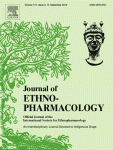

Abstract
Aim of the study
The aim of the present study is to determine in a procedurally uniform manner the mescaline concentrations in stem tissue of 14 taxa/cultivars of the subgenus Trichocereus of the genus Echinopsis (Cactaceae) and to evaluate the relationship (if any) between mescaline concentration and actual shamanic use of these plants.
Materials and methods
Columnar cacti of the genus Echinopsis, some of which are used for diagnostic and therapeutic purposes by South American shamans in traditional medicine, were selected for analysis because they were vegetative clones of plants of documented geographic origin and/or because they were known to be used by practitioners of shamanism. Mescaline content of the cortical stem chlorenchyma of each cactus was determined by Soxhlet extraction with methanol, followed by acid–base extraction with water and dichloromethane, and high-pressure liquid chromatography (HPLC).
Results
By virtue of the consistent analytical procedures used, comparable alkaloid concentrations were obtained that facilitated the ranking of the various selected species and cultivars of Echinopsis, all of which exhibited positive mescaline contents. The range of mescaline concentrations across the 14 taxa/cultivars spanned two orders of magnitude, from 0.053% to 4.7% by dry weight.
Conclusions
The mescaline concentrations reported here largely support the hypothesis that plants with the highest mescaline concentrations – particularly E. pachanoi from Peru – are most associated with documented shamanic use.
Graphical abstract


Supplementary material available here.








JOURNAL ARTICLE
Annotated vascular flora of the Dead Horse Mountains, Big Bend National Park, Texas, with notes on local vegetation communities and regional floristic relationships.
Fenstermacher, Joselyn, A. Michael Powell, Joe Sirotnak, and Martin Terry
Journal of the Botanical Research Institute of Texas,
Vol. 2, No. 1 (24 JULY 2008), pp. 685-730 (46 pages)
PDF DOI
Abstract
The Dead Horse Mountains of Big Bend National Park are one of the least explored areas in Texas. This is the first collective body of work to document the area's vascular flora through a major new collection of vouchered specimens and a survey of existing herbarium specimens. Field work was performed between August 2003 and September 2006. The study area covers 176,800 acres (71,548 hectares; 276 mi², 715 km²) with a 4100 ft (1250 m) range in elevation. Non-vascular specimens (bryophytes, hepatophytes, and lichens) were also collected but not included in the final analysis. A total of 1584 vascular specimens were collected during the current study; a herbaria search uncovered 2212 previously-collected vouchers. The flora consists of 662 species in 344 genera and 91 families. The best-represented families are the Asteraceae (80 species), Poaceae (75 species), Fabaceae (52 species), Euphorbiaceae (34 species), Cactaceae (34 species), Pteridaceae (20 species), and Boraginaceae (20 species). Seymeria falcata var. falcata was collected for the first time in the United States while eight new species were recorded for Brewster County. One additional taxon (Galactia sp.) may be undescribed or new to the United States. Vouchered taxa increased by 12% and 55 species were documented in the study area for the first time. Twenty-four non-native species are known from the study area; three are state-listed noxious weeds, and six are considered invasive. The number of known Texas endemics in the Dead Horse increased to 11; seventeen species are considered rare. The Dead Horse flora differs from other southwestern floras mainly by an increased relative importance of monocots, and the elevation of the Poaceae to be co-dominant with the Asteraceae. These and other factors suggest connections to several peripheral floristic areas, ranging from the Mogollon Rim and the Great Plains to South Texas and southern Mexico.
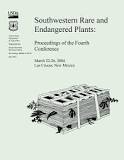

JOURNAL ARTICLE
A tale of two cacti-the complex relationship between peyote (Lophophora williamsii) and endangered star cactus (Astrophytum asterias)
Terry M, Price D, Poole J.
In: Barlow-Irick, P.; Anderson, J.; McDonald, C., tech eds. Southwestern rare and endangered plants: Proceedings of the Fourth Conference; March 22-26, 2004; Las Cruces, New Mexico. Proceedings. RMRS-P-48CD. Fort Collins, CO: US Department of Agriculture, Forest Service, Rocky Mountain Research Station. p. 115-121 2007 (Vol. 48).
PDF DOIAbstract
Astrophytum asterias, commonly called star cactus, is a federally listed endangered cactus endemic to the Tamaulipan thornscrub ecoregion of extreme southern Texas, USA, and Tamaulipas and Nuevo Leon, Mexico. Only three metapopulations totaling less than 4000 plants are presently known in Texas. Star cactus, known locally as “star peyote”, is highly sought by collectors. This small, dome-shaped, spineless, eightribbed cactus is sometimes mistaken for peyote (Lophophora williamsii), which grows in the same or adjacent habitats. Peyote is harvested from native thornscrub habitats in Texas by local Hispanic people and sold to peyoteros, licensed distributors who sell the peyote to Native American Church members. Annual peyote harvests in Texas approach 2,000,000 “buttons” (crowns). Although the peyoteros do not buy star cactus from harvesters, they cultivate star cactus in peyote gardens at their places of business and give star cacti to their customers as lagniappe. If even 0.1% of harvested “peyote” is actually star cactus, the annual take of this endangered cactus approaches the total number of wild specimens known in the U.S. This real but unquantifiable take, together with information from interviews with local residents, suggests the existence of many more star cactus populations than have been documented.
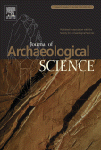

Abstract
Peyote, a psychoactive cactus native to the Chihuahuan Desert, has been preserved from excavations at only two archaeological sites: Shumla Caves in the Lower Pecos region of southwest Texas and shelter CM-79 near Cuatro Ciénegas in Coahuila, Mexico. We determined three indistinguishable radiocarbon ages of 5160 ± 45, 5200 ± 35, and 5210 ± 35 14C years BP, yielding a mean age of 5195 ± 20 14C years BP for the three specimens from Shumla Caves. For one of the Cuatro Ciénegas specimens we obtained the first direct radiocarbon date of 835 ± 35 14C years BP. This study demonstrates the use of peyote by inhabitants of the Lower Pecos region of the Chihuahuan Desert about 6000 calendar years ago, and confirms its use by inhabitants of the Cuatro Ciénegas region of the Chihuahuan Desert in Late Prehistoric times. The Shumla Caves' specimens are composed of an aggregate of ground peyote mixed with other plant material, i.e., they appear to be manufactured peyote effigies, and are definitely not intact peyote buttons.


Abstract
We report the development of polymorphic microsatellite markers for the endangered North American cactus Astrophytum asterias (Cactaceae). Six loci, averaging 8.5 alleles per locus, were found to amplify genomic DNA consistently in 94 individuals from four geographically defined demes in South Texas. These markers will permit the generation of appropriate data for estimating population genetic parameters, population structure and the degree of inbreeding in the small, fragmented populations of A. asterias that currently exist. These are the first microsatellites reported for the genus Astrophytum and for the tribe Cacteae.
PDF not available
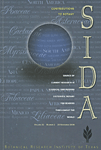

Abstract
Over the last four decades, the size and density of populations of Lophophora williamsii (peyote) have diminished markedly in large areas of South Texas where licensed peyote distributors harvest the cactus for ceremonial use by the Native American Church. Part of the problem lies in the fact that some harvesters are cutting plants too low on the subterranean stem or taproot. That practice precludes the regeneration of new stems and ultimately results in the death of the decapitated plants. To address this problem, we describe the anatomical distinctions between subterranean stem and root in L. williamsii as follows: The stem cortex can be distinguished by the cortical bundles running through the parenchyma, in contrast to the root cortex, which consists of pure parenchyma without cortical bundles. The pith at the center of the stem is pure parenchyma (without xylem) and is readily distinguished from the dilatated metaxylem (with masses of dark-staining metaxylem tracheary elements) occupying the center of the root. With these new anatomical tools, it is now possible to set up titration experiments, first in the greenhouse and then in the field, to generate practical biometrie data to determine the maximum depth at which the peyote harvesters can cut the plants without significantly reducing the survival rate of the rootstocks left in the ground after harvest.


